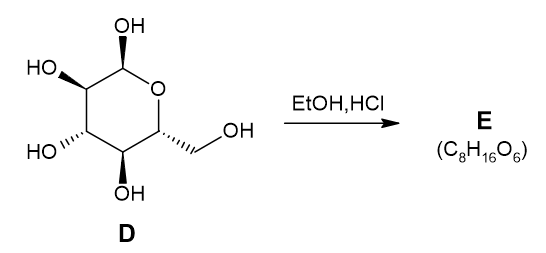In the following reaction, only one of the hydroxyl groups in D reacts under the given conditions:
I was wondering which OH group reacts and why? Also I have been trying to determine the structure of E based on which hydroxyl group reacts.
My thoughts are that OH in the side group can react via SN2 with the reactants, but the OH right adjacent to the ether O can react leaving a carbocation that can be stabilised by lone pair from O. This would mean SN1 and a completely different product.
Can someone please explain the correct mechanism?

